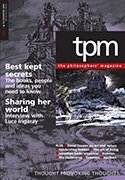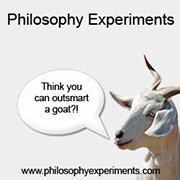In the eighth contribution to our fifty-part series, David E Cooper considers the human in nature
 The concept of cultural (or human) landscape has circulated among geographers for a century, but its welcome prominence in philosophical discussions is a very recent development – the result, in large part, of the enthusiasms of several Scandinavian philosophers. Actually, these writers use the expression in two ways. For some, it refers to landscapes – even virgin jungles and mountain wildernesses – that are invested with cultural significance. For most writers, including me, it refers, however, to landscapes that saliently bear the mark of human intervention and control – to farmland, parks and gardens, managed woods, climbed hills, and swum off beaches: to places that, typically, are cultivated as well as culturally imbued.
The concept of cultural (or human) landscape has circulated among geographers for a century, but its welcome prominence in philosophical discussions is a very recent development – the result, in large part, of the enthusiasms of several Scandinavian philosophers. Actually, these writers use the expression in two ways. For some, it refers to landscapes – even virgin jungles and mountain wildernesses – that are invested with cultural significance. For most writers, including me, it refers, however, to landscapes that saliently bear the mark of human intervention and control – to farmland, parks and gardens, managed woods, climbed hills, and swum off beaches: to places that, typically, are cultivated as well as culturally imbued.
The concept has become prominent because it stands at the junction of several recent tendencies in philosophy. These include vigorous interest in “the aesthetics of everyday life”; the emergence of an environmental virtue ethics focused less on the value of nature than on how people should engage with environments; and renewed attempts by philosophical anthropologists to identify the location of human life within an encompassing natural world.
Cultural landscape is a topic. What is the corresponding idea? At its most modest, it is simply that cultural landscapes reward attention from various philosophical enquirers. There are good, philosophically interesting questions to ask about the aesthetics of farming (Can industrial farms be anything but blots on the landscape?); about the moral responsibilities of gardeners (Are water-guzzling lawns permissible in an era of ecological fragility?); and about the interface of culture and nature (Does terrain help to shape a people’s identity?).
There is, however, a more ambitious idea about cultural landscape. This is the thought that attention to cultural landscape is a crucial corrective to misconceptions or otherwise regrettable tendencies in the fields of aesthetics, environmental ethics, and philosophical anthropology.
Once announced, the point encapsulated in the phrase “aesthetics of everyday life” – that countless human products besides works of art are appropriate objects of aesthetic appreciation – rings so obviously true that the myopically Western aesthetic concentration on art is exposed as perverse. Not only perverse, but largely irrelevant to the world to which most people most of the time are aesthetically alert, and blind to people’s recognition that performance of a practical function – from coffee making to hoovering – may be an important criterion of an object’s beauty and style. What is true of coffee makers and vacuum cleaners is also true, of course, of gardens, village greens and cricket grounds. If aesthetics is to free itself from the influence of the art versus craft divide, then cultural landscapes, alongside other objects of everyday engagement, must come under its remit.
An analogous complaint might be made about the narrowness of the notion of nature that dominated Western environmental ethics until very recently. (“Western”, since the complaints I am making do not apply to, for example, Japanese traditions of thinking about art and about nature.) Here, nature has usually been identified with wilderness – with nature set apart from human activity – and the chief question concerned the “intrinsic value” or otherwise of nature thus understood. Environmental ethics had peculiarly little to say, beyond expressing regret at a necessary evil, about people’s comportment in and towards the environments – humanised, cultural landscapes – in which they actually act and move. The discipline, fortunately, is now coming to maturity. Its practitioners go beyond agonising about whether it is proper even to “tread lightly” on the earth and are instead examining how virtues – from tidiness and cleanliness to compassion and humility – might inform such heavy-treading interventions as landscape design and agriculture.
The older environmental ethics presupposed a sharp distinction between nature (“wilderness”) and the human domain – a distinction that has also plagued philosophical anthropology’s attempt to locate the human in relation to the natural. Views have tended to swing between a picture of experience of the world as a Promethean human construct, and a conception of it as, essentially, the passive effect of objective natural processes. Attention to cultural or “hybrid” landscapes can provide a sharp reminder of the implausibility of separating, even notionally, the possibility of human creative practice and a way of experiencing the natural world. The historically and philosophically alert landscape designer and farmer know that the goals they pursue could not have been envisaged except against a background experience of nature that has itself been shaped and enabled by traditions of human practice. Cultural landscapes are good to think with, for they are salient epiphanies of a deep relationship of co-dependence between human endeavour and the experience of nature.
Further reading
Humans in the Land: The Ethics and Aesthetics of the Cultural Landscape, eds. Sven Arntzen and Emily Brady (Unipub)
David E Cooper is emeritus professor of philosophy at the University of Durham and author of The Philosophy of Gardens (Oxford University Press).
Read all fifty ideas and more in the special 50th issue of tpm
 Email This Post
Email This Post 



Just an aside..
A universal environment is simply geography.
That is, a misnamed, universal, “the environment” looks like an anthropomorphic take on geography. For academics and other beady-eyed, hungry homo sapiens everywhere, geography becomes a single “environment”.
Environments of course cannot be summated as an “environment”. There is no “the environment” that is geographically placed.